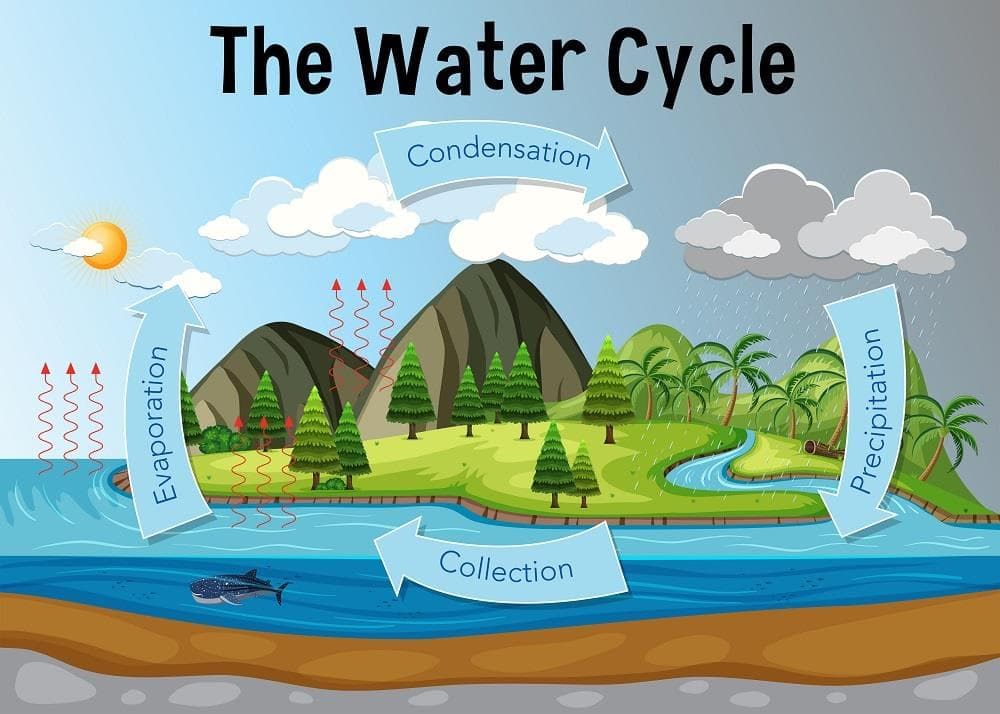Test: Weather, Water and Air- 1 - Class 4 MCQ
15 Questions MCQ Test - Test: Weather, Water and Air- 1
What happens when the sun heats the water on the earth's surface?
State whether the following statement is True or False:
Warm air rises up.
A breeze blowing from land towards the sea is known as ______.
Which two of the gases given below make up more than 95% of air?
What mainly causes different weather changes on Earth?
Water changes from one state to another due to _____ and cooling.
State whether the following statement is True or False:
Humid weather is when there is a lot of water vapor in the air, making it difficult for sweat to evaporate quickly.
When the sun shines brightly, it heats up the ______.
On cold winter morning water vapour condenses on dust particles to form
State whether the following statement is True or False.
Water covers about 71% of the earth's surface.





















